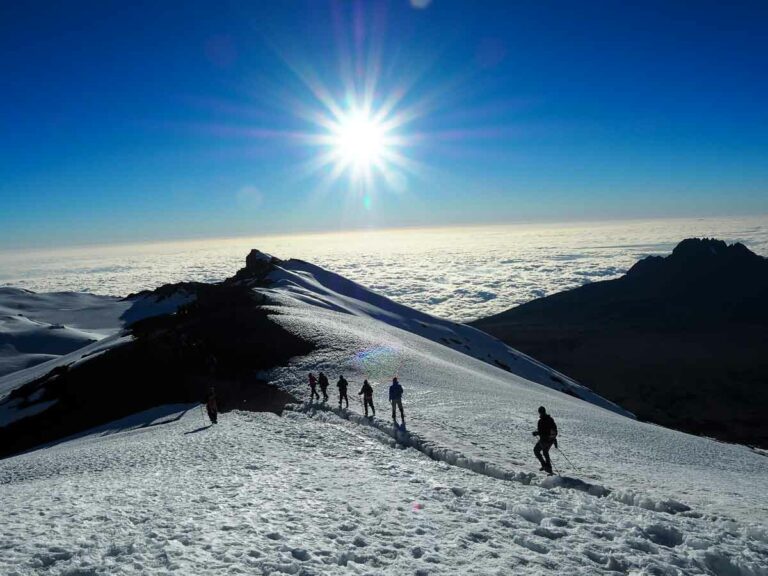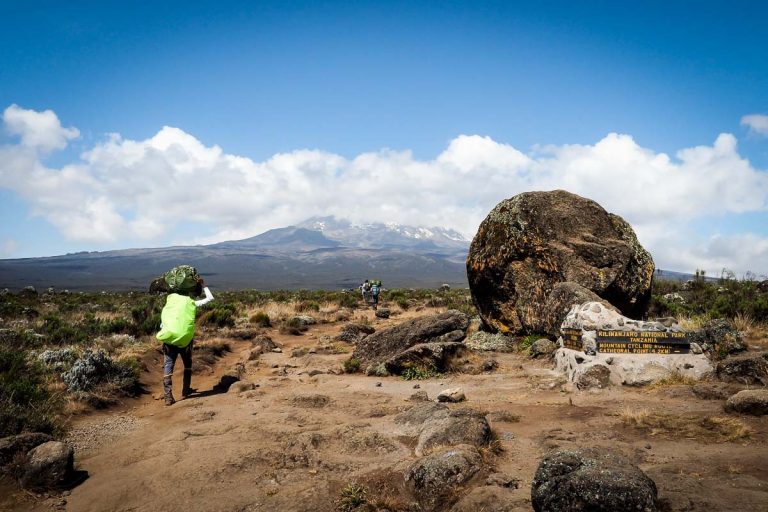Tipping on Everest Base Camp Trek (Don’t Tip Less Than This!)
Tipping in Nepal isn’t vey common.. but tipping while trekking is.
And this isn’t just a customary gesture.
It can make a substantial difference for guides and porters livelihoods as they often rely on these additional earnings.. especially during the off-season (when work can be scarce).
However, finding clear and consistent information about how much to tip can be challenging.
When I trekked Everest Base Camp in mid 2024 I remember combing through online forums (like reddits r/nepal) and reaching out to my agency for additional assistance. But they each offered different advice.
It was overwhelming. Especially when I was trying to ensure my tip was fair and respectful of the local culture.
Here’s what I’ve learned, and what I ended up tipping on Everest base camp to help you navigate this aspect of your adventure.
Table of Contents
Key Takeaways
Related: Check out this article for my favorite everest base camp trekking company
General Guidelines for Tipping

Tipping amounts will vary based on your group size, the number of porters and guides, and the duration and difficulty of the hike.
For example, a 17 day EBC hike including Chola Pass in a large group would elicit a greater tip than a solo 14 day hike
A common approach is to tip as a percentage of the total tour price. This ranges from 10-15% of the trek cost. Another method is to tip based on a daily rate.
Lets look at these in a bit more detail:
Tipping 10-15 percent of the total tour cost
Our base camp page was $1250 USD per person, therefore we could estimate a tip of $125 – $190.
NB: this is the total tip
Per Person vs. Per Group
If you’re trekking solo or as a couple, you’ll tip less overall than when in a large group, however you should probably tip more per person that you would in a big group.
Larger groups might give a single tip that’s divided among the staff, while smaller groups often tip individually. Remember, the tip should reflect the effort each person has put into making your trek a success.

Tipping Amounts for Guides
For guides, a typical rate might be $10 per day, per person. For a 12-day trek, this adds up to about $120. If your guide went above and beyond—providing exceptional service, sharing deep cultural insights, or helping you through a tough time—consider tipping on the higher end of that range or even more.
Tipping Amounts for Porters
Porters typically receive a bit less than guides, around $5 per day, per person. For a 12-day trek, this amounts to $60. If your porter carried an especially heavy load or provided extra assistance, like carrying your gear in addition to the group load, it’s worth tipping a bit more.
My Recommendations For Tipping on Everest Base Camp
I created this table below to give guidance on how the tip amount should change based on the group size, and the number of days spent trekking.
Note: this is the tip amount PER PERSON.

BTW. I actually created a tip calculator spreadsheet that accounts for things like different staff roles, and the difficulty of the treks. So let me know if you’re interested in that.
Best Practices for Tipping
When to Give the Tip
The consensus is to tip at the end of the trek, during a final gathering or celebration. This ensures that the tip reflects the overall experience and gives you a chance to express your gratitude personally. But, if you feel particularly moved by someone’s help during the trek, a small tip along the way can also be appreciated.
For us, this meant giving the tip when having some celebratory beers back in Lukla, the night before our flight back to Kathmandu.


How to Tip Discreetly
Cultural sensitivity is key when tipping in Nepal. It’s best to hand over tips discreetly, in an envelope and directly to the individual.
I recommend to give a lump sum to the lead guide, who then distributes it among the staff. But this approach may lack the personal touch of giving directly to each person.
Tipping in Large Groups
If you trekked as a group, you can pool the tips from everyone and then distribute them among the staff. This ensures everyone contributes fairly and the staff receives a well-deserved collective tip.
Discuss this with your group at the start of the trek to avoid any last-minute confusion.
Trekking Guide- USD $5 to $6 per day
Tour guide- USD $5 to $6 per day
Porters- USD $3 to $4 per day
Tipping in Small or Private Groups
In smaller or private groups, you’ll likely interact more closely with your guides and porters. This personalized experience often warrants a slightly higher tip.
I found that in these settings, the relationships you build with the staff can make the trek even more memorable, and tipping generously feels more personal and meaningful.
And if you’re dissatisfied with the service, it’s okay to adjust your tip accordingly. Just be sure to communicate your reasons politely.
Trekking Guide- USD $10 to $15 per day
Tour guides- USD $10 to $15 per day
Porters- USD $5 to $10 per day
How to handle Additional Tip Requests
Sometimes, unexpected situations arise, like a staff member requesting additional money or tips. This can be uncomfortable, but it’s important to handle it with tact. If the request seems reasonable, considering the circumstances, it might be worth accommodating. But, if it feels inappropriate, it’s okay to politely decline and stick to your original plan.
How Much I Paid

I did the standard 14-day Everest Base Camp hike which included 11 hiking days. It was just myself and my girlfriend (so a group size of two) and we had 1 guide and no porters – so we only were tipping the guide.
We elected to tip him 30,000 NPR, or around USD 225 which (we hope) was on the high end as he worked incredibly hard and gave as a fantastic experience. We also felt, having opted to not have porters, we were happy to give some of the money we would have given for a porter’s tip to our guide instead.
Nepal Trekking Cheatsheet
🚑 Should I buy travel insurance for Nepal?
100% YES! — Nepal has now introduceed “free” healthcare but it’s only for citizens! Tourists need travel insurance in case anything happens on your visit. Also be aware many policies won’t cover high altitude hiking as it’s a high risk activity!
(that’s right, check the t&c’s on your complimentary credit card insurance)
I highly recommend World Nomads as you can get specific add-ons for high altitude hiking UP TO 6000m (Which most travel insurance companies don’t offer!)
🎫 Do I need a visa for Nepal?
Probably not — Nepal now provide a visa on arrival (VoA) for most western countires which allows you stay for up to 90 days. However, some other countries do need a pre-approved eVisa (check here!). A single entry 15 day Nepal tourist visa costs USD$30, a 30 day visa costs $50 and a 90 day visa costs $125.
When paying for your visa at the airport, you’ll need either USD or NPR cash.. or a debit card capable of this transaction. For some reason they don’t accept credit cards.
💉Do I need any vaccinations for Nepal?
YES! Make sure you are up-to-date with all your vaccines. Common travel vaccines include Hep A/B + Typhoid, and Diphtheria + Tetanus.
Rabies is an issue in Nepal but the vaccine is expensive and ineffective as a preventative measure (it only lasts a few years and you’ll need to get them again if you require treatment). If bitten by a stray dog seek immediate medical attention! There is however, a rebies vaccination program in the Khumbu region (Everst) so chances of infection are low.
As always, talk to your GP or specialised travel doctor a few weeks BEFORE you leave.
🏩 What’s the best Nepal Trekking companies?
I personally had an amazing excperience with Nepal Hiking Team.
You can read all the operators i reccommend in this article
💸How do you pay for things in Nepal?
Cash is king in Nepal, so you’ll want to get some folding tender out from an ATM when you land. Larger businesses and hotels will take Debit / Credit Card but most resturants, and street vendors want cash.
When trekking, ATMs are few and far between so dont get stuck without cash
I personally use a Wise debit card for all my international money needs as they only convert the funds when you make payment, plus they offer a much better spread (margin on the true exhange rate) than the banks do. They work in all the Nepalese ATMs I tried.
🚌 What’s the public transport like in Nepal?
There is a good basic network of local and inter-city busses in Nepal and travel this way is very cheap. Domestic flight are also very affordable and a far more comfortable option. Checkout Bussewa for booking bus tickets online.
📲 How do I get internet/data/wifi in Nepal and while trekking?
This one needs a whole nother article, but the short version is prepaid SIM cards are cheap and availible to tourists and locals alike (You don’t need a pricey tourst SIM!)
I got an Ncell SIM card from a vendor in Thamel, Kathmandu for around $10 and this lasted me my whole trip.
NB: Make sure to bring your passport!
Another option is an Airalo eSIM. This is a little more expensive but works from the moment you land is is SOOOOO much easier than the in person verification process required for a local sim.
✈️ What’s the best site to buy flights to Nepal?
For finding cheap flights, I recommend Skyscanner. Once you find the flight you’re looking for, I’d then suggest booking directly with the carrier (even if it costs a few $$ more than with one of the agreggators/agencies).
💧Can you drink the water in Nepal?
Safest not to — tap water in Nepal may be OK (the locals drink it) but is generally untreated and not reccommended for tourists. Purchase bottled water for drinking and teeth brushing, or get water purification tablets.
🏔️💧Can you drink the water while trekking in Nepal?
Yes — but make sure to purify it first. I always use these Aquatabs
There are lots of taps and water sources along the trek. (your guide will show you). And buying bottled water in the mountains is extremely expensive. If you want to drink water from the rivers and streams you generally can but ALWAYS follow best practice and drink from fast flowing water as far up stream as possible. I’d also recommend a Brita Water Bottle for rehydrating on the trail safely.








Great post! I love that you highlighted the importance of tipping guides and Sherpas. It’s such a nice way to show appreciation for all their hard work. Your tips on how much to give are super helpful—thanks for sharing!